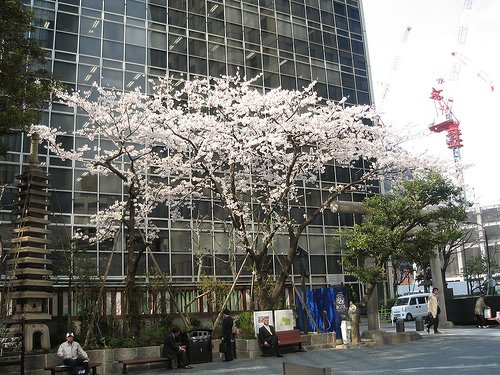Japan is ecstatic over its 10-6 win over Cuba, which allowed the country to clench the first-ever World Baseball Classic championship at Petco Stadium in my own home town of San Diego. All through the country Japanese stopped what they were doing to watch the game, and in Tokyo’s Akihabara electronics district, all display TVs were tuned to watch while hundreds gathered to cheer. The victory was celebrated in all corners of the country, and the fervor got so heated there were some injuries among people lining up to buy copies of the newspaper proclaiming Japan’s win. Watching it all on the news, I remember thinking that Japan needs more of this kind of positive national feedback to stay healthy as a people. Sometimes I think that Japan is too reserved, and when I look at my wife and her mother — who have never shared an emotional embrace, even after my wife came back from years of studying in the U.S., since it’s just not done here — it seems to me that Japan needs more positive ways to show their emotions. Anyway, congratulations to the Japan team!
The national flower of Japan is the chrysanthemum, but anyone visiting the country could be forgiven for assuming that it was the cherry blossom, or sakura. At the beginning of spring each year the sakura bloom beautifully throughout Japan, and during that time, tens of thousands of people will descend on parks with sakura trees to engage in hanami, or flower viewing, basically an excuse to spread out a blanket with some friends and get drunk while sakura petals fall all around you. During this “season of the sakura,” the Japanese news features daily “sakura reports,” letting cherry blossom enthusiasts know the current condition of flowers in various parts of the country as the trees bloom from south to north. It all comes to a head as the flowers reach mankai, becoming fully opened and at their most beautiful. Yesterday marked the official opening of the first sakura in Tokyo, coming a full week earlier than most years. Flower viewing has been popular for centuries, beginning with nobles in the Nara period (710-784) and catching on with commoners in the subsequent centuries.
Today I had to drive across town, and it took me about an hour to get there due to all the traffic. It wasn’t because of an accident, but instead a normal phenomenon found in Japan this month: the end-of-year road work, when government agencies hurry to use up their budgets before the Japanese fiscal year ends March 31. Japan is a country addicted to construction, and by law all car- and gasoline-related taxes must be used to build roads and only roads, even if there’s no particular need for more roads this year. As a result, March always marks a huge increase in road work throughout the country, with no actual benefit visible to anyone. If Japan wants to devote so much of its budget process to construction, why don’t they use it in ways that are more useful, like burying those ugly power lines underground, or bringing fast Internet to more parts of the country?















